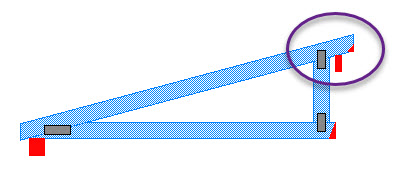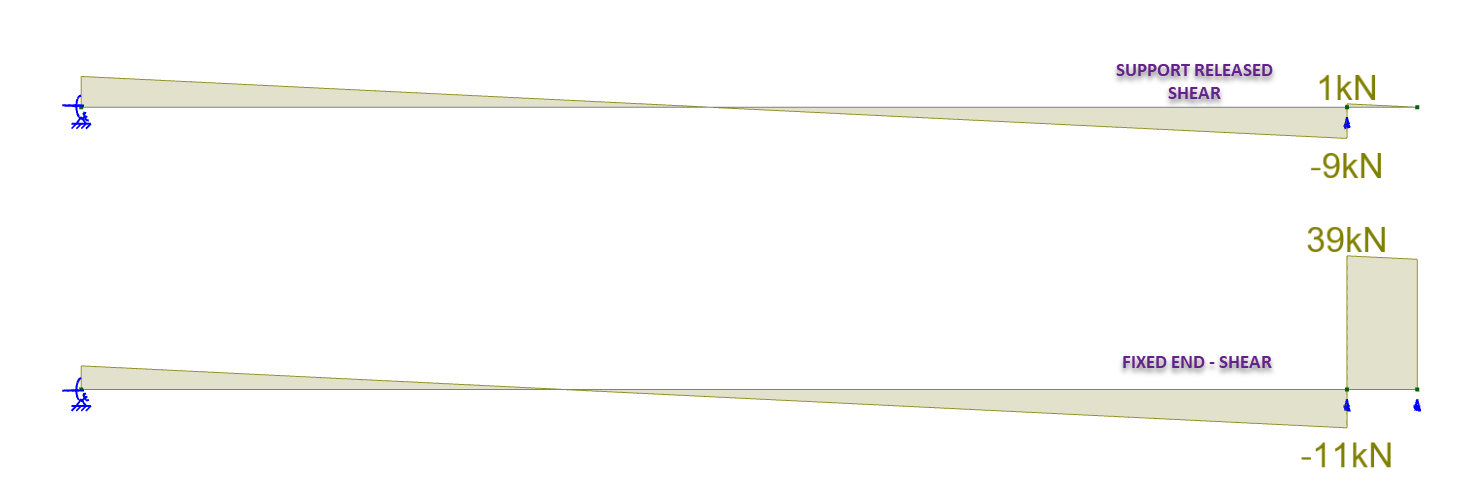News
Multiple Supports and Load Reversal

Multiple supports and load reversal
When detailing trusses and frames, we tend to think of supports as “the more, the merrier.” Unfortunately, having supports located irregularly can have adverse effects. Critical detailing is required, and it can save time and money.
Girders with three or more supports
Since they carry other trusses, girder trusses tend to have heavier loading and design. It is then common to provide them with internal support. Depending on the loading arrangement, the internal support could induce a reversed reaction at one heel. This is not a desirable solution. The heavier-loaded section of the truss will be “lifting” the lighter section from the top plate, and the connection requires a tie-down under permanent loads.

Figure 1 – Uneven loading on three supports.
A solution is to release one of the supports and design the truss simply supported with a cantilever section.

Figure 2 – Fig 1 truss with left heel released.
While the internal support has a reaction of 7.2kN under three supports, it has only 6kN with the heel released. This improvement means that 15% less load is transferred to the system, optimizing the model and costs. The heel deflects upwards by 3mm, and the right span deflects 2mm further down than in the three supports model.
Jack flyovers
Jacks’ flyovers have similar behavior. Depending on the station, the software may pick up a support at the truncated girder location and at the connection with a wall or the hip flyover not far behind.

Figure 3 – Jack truss with a fixed flyover
The 1800mm span jack picked up the load-bearing wall 100mm behind. This configuration caused the reaction at the girder to be more than five times what it would have been if the connection of the flyover had been disregarded. If the girder supports a row of jacks, the consequence on the girder design and its supporting elements will be substantial.
One could reasonably ask why these close supports cause such an issue. Aren’t they sharing the load taken by one only at the other end? Yes, but mostly no.
Beam equivalent
Let’s look at the example of a 1.8m beam supported by one support at one end and two supports spaced 100mm apart at the other end. Loading is linear for simplicity. The two supports close together prevent the member from rotating at the joint. The overall deflection is reduced. The comparison below shows markers placed at equal distances from support. The marker lengths on the beam with the released end are identical in red. The beam with two supports in proximity has shorter markers in purple and green. The marker on the specific end, green, is notably shorter. The rotation at that end is restrained by the supports in proximity.

Figure 4 – Deflection comparison
Although arranged differently, bending will be similar for the maximum effort. However, the maximum shear action and reactions will be multiple times higher, leading to unbalanced reactions.

Figure 5 – Shear comparison

Figure 6 – Reactions comparison
A simple analogy could be that of setting up a tent with pegs. If your pegs are equally spaced, they provide the same hold-down. If you place one peg at one end and two relatively close to each other at the other, you’ll notice that the tent sheeting appears to flap less. When strong winds come up, though, the inner of two pegs will be where the tent may shear off, or your peg may go flying.
In summary, trusses and elements with three or more supports should be considered appropriately. Reversed reactions under gravity loads are a sign that the design requires attention. While both options have pros and cons, releasing the support is usually preferred.

Vaimiti Rigal
Vaimiti.Rigal@multinail.com
0403 045 225
Let’s Work Together